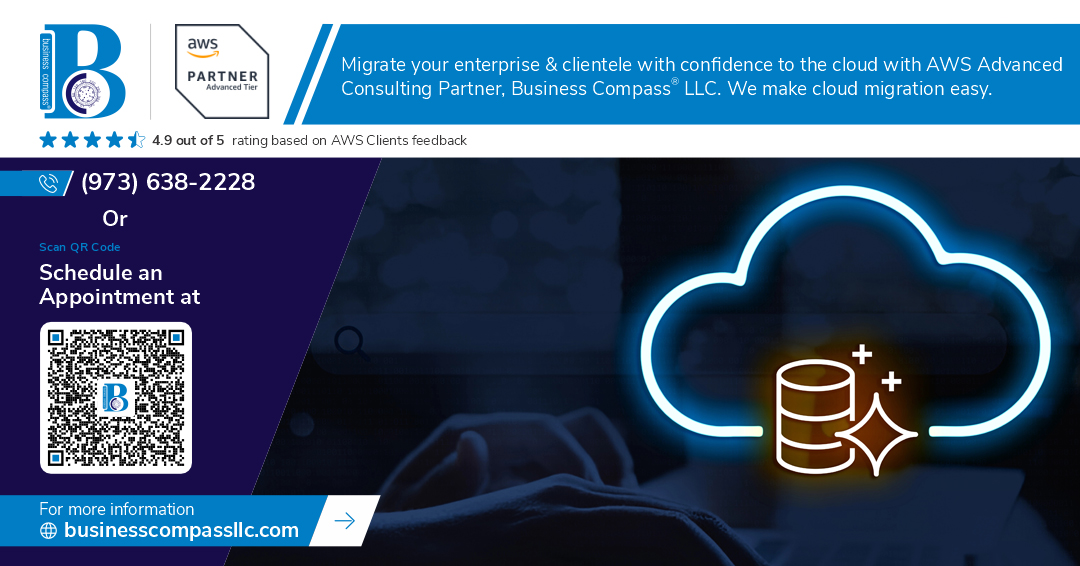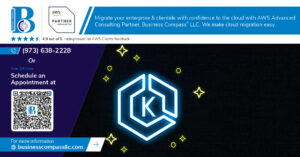Imagine your database as a vault, holding precious digital treasures. Now, picture that vault standing exposed in a bustling city square. 😱 Terrifying, isn’t it? Yet, many businesses unknowingly leave their AWS databases just as vulnerable. In today’s data-driven world, where information is gold, securing your databases isn’t just important—it’s critical.
But fear not! 🛡️ Whether you’re juggling RDS, DynamoDB, Aurora, Redshift, or ElastiCache, AWS offers a fortress of security best practices to keep your data safe. From iron-clad access control to cutting-edge encryption techniques, we’ll guide you through the labyrinth of AWS database security. Ready to transform your database from an easy target into an impenetrable stronghold?
In this comprehensive guide, we’ll dive deep into understanding AWS database services, implementing robust access control, and mastering encryption both at rest and in transit. We’ll also explore essential monitoring and auditing techniques, foolproof backup strategies, and how to navigate the complex waters of compliance and governance. Plus, we’ll unveil advanced security features that will elevate your database protection to new heights. Let’s embark on this journey to make your AWS databases as secure as Fort Knox! 🚀
Understanding AWS Database Services
Overview of RDS, DynamoDB, Aurora, Redshift, and ElastiCache
AWS offers a range of database services to meet diverse application needs. Let’s explore the key features of each:
| Service | Type | Use Case | Key Security Features |
|---|---|---|---|
| RDS | Relational | Traditional applications | Multi-AZ deployment, encryption at rest |
| DynamoDB | NoSQL | High-scale, low-latency apps | Fine-grained access control, encryption |
| Aurora | Relational | High-performance, scalable | Serverless option, built-in security |
| Redshift | Data Warehouse | Analytics, big data | Column-level access control, encryption |
| ElastiCache | In-memory | Caching, real-time apps | Redis AUTH, encryption in transit |
Importance of database security in AWS
Securing AWS databases is crucial for:
- Protecting sensitive data
- Maintaining customer trust
- Ensuring regulatory compliance
- Preventing data breaches and financial losses
- Safeguarding business reputation
Common security threats and vulnerabilities
- SQL injection attacks
- Unauthorized access attempts
- Data exfiltration
- Insider threats
- Misconfigured security settings
Implementing robust security measures across all AWS database services is essential to mitigate these risks effectively. As we delve deeper into specific security practices, you’ll learn how to leverage AWS’s built-in features and best practices to create a comprehensive security strategy for your databases.
Implementing Access Control
Using IAM roles and policies
AWS Identity and Access Management (IAM) is crucial for securing your databases. IAM roles and policies provide granular control over who can access your database resources and what actions they can perform. Here’s a breakdown of key considerations:
- Role-based access: Create IAM roles for different user types (e.g., developers, admins, analysts) with specific permissions.
- Least privilege principle: Grant only the necessary permissions to each role, reducing potential security risks.
- Policy attachments: Attach policies to roles to define allowed actions on database resources.
| IAM Role | Purpose | Example Permissions |
|---|---|---|
| DatabaseAdmin | Full database management | Read, Write, Delete, Modify |
| DataAnalyst | Read-only access | Read, Describe |
| BackupOperator | Backup and restore | Backup, Restore, Describe |
Configuring VPC security groups
Virtual Private Cloud (VPC) security groups act as a virtual firewall for your database instances. Proper configuration ensures that only authorized traffic reaches your databases:
- Create separate security groups for each database service
- Allow inbound traffic only from necessary sources (e.g., application servers)
- Restrict outbound traffic to essential destinations
- Regularly review and update security group rules
Implementing network isolation
Network isolation adds an extra layer of security by controlling the flow of traffic to and from your databases:
- Use private subnets for database instances
- Implement Network Access Control Lists (NACLs) for subnet-level security
- Utilize AWS PrivateLink for secure, private connectivity between VPCs and AWS services
Managing database user accounts and permissions
Proper management of database-level user accounts and permissions is essential for maintaining security:
- Create unique accounts for each user or application
- Implement strong password policies
- Regularly rotate credentials
- Use database-specific access control mechanisms (e.g., PostgreSQL roles, MySQL grants)
By implementing these access control measures, you significantly enhance the security posture of your AWS databases. Next, we’ll explore how to further protect your data through encryption at rest.
Encrypting Data at Rest
A. Enabling encryption for RDS instances
Encrypting data at rest is crucial for protecting sensitive information stored in your RDS instances. AWS provides built-in encryption capabilities for RDS, making it easy to secure your databases.
To enable encryption for RDS instances:
- Use AWS Key Management Service (KMS) to create and manage encryption keys
- Enable encryption during instance creation or modify an existing instance
- Choose between AWS-managed keys or customer-managed keys
Here’s a comparison of encryption options for RDS:
| Feature | AWS-managed Keys | Customer-managed Keys |
|---|---|---|
| Key Management | Automatic | Manual |
| Control | Limited | Full |
| Rotation | Automatic | Manual or automatic |
| Auditing | Limited | Comprehensive |
B. Securing DynamoDB tables with encryption
DynamoDB offers server-side encryption by default, ensuring your data is protected at rest. To enhance security:
- Use AWS KMS customer-managed keys for granular control
- Enable encryption on existing tables through the AWS Management Console
- Implement fine-grained access control using IAM policies
C. Implementing Aurora encryption
Aurora encryption is similar to RDS encryption but with additional features:
- Encrypt both primary and replica instances
- Use AWS KMS for key management
- Enable encryption during cluster creation or restore from an unencrypted snapshot
D. Protecting Redshift data with encryption
Redshift provides multiple layers of encryption:
- Cluster encryption: Protects data at rest
- Database encryption: Secures individual columns
- Hardware Security Module (HSM): Offers additional key management options
To implement Redshift encryption:
- Enable encryption during cluster launch or modify existing clusters
- Use AWS KMS or HSM for key management
- Implement column-level encryption for sensitive data
E. Securing ElastiCache with encryption at rest
ElastiCache supports encryption at rest for Redis clusters:
- Enable encryption during cluster creation or modify existing clusters
- Use AWS KMS for key management
- Implement encryption for all data stored in Redis nodes and backups
By implementing encryption across these AWS database services, you significantly enhance your data protection strategy and comply with various security regulations.
Securing Data in Transit
A. Configuring SSL/TLS connections for RDS
Securing data in transit is crucial for protecting sensitive information as it moves between your application and the database. For Amazon RDS, configuring SSL/TLS connections is a fundamental step in ensuring data security.
To enable SSL/TLS for your RDS instance:
- Obtain an SSL certificate
- Configure your database to use SSL
- Update your application’s connection string
Here’s a comparison of SSL/TLS support across different RDS engines:
| Database Engine | SSL/TLS Support | Default Port |
|---|---|---|
| MySQL | Yes | 3306 |
| PostgreSQL | Yes | 5432 |
| Oracle | Yes | 1521 |
| SQL Server | Yes | 1433 |
| MariaDB | Yes | 3306 |
B. Enabling in-transit encryption for DynamoDB
DynamoDB automatically encrypts all network traffic between your application and the DynamoDB endpoints using HTTPS/TLS. To further enhance security:
- Use AWS PrivateLink to establish a private connection between your VPC and DynamoDB
- Implement client-side encryption for sensitive data before sending it to DynamoDB
C. Securing Aurora connections
Amazon Aurora supports SSL/TLS encryption for data in transit. To secure Aurora connections:
- Enable SSL/TLS in your Aurora cluster configuration
- Use the AWS-provided CA certificate
- Configure your application to use SSL/TLS when connecting to Aurora
D. Implementing Redshift SSL
Amazon Redshift uses SSL to encrypt connections between clients and the cluster. To implement SSL:
- Enable SSL in your Redshift cluster settings
- Use the AWS-provided CA certificate
- Configure your client tools to use SSL when connecting to Redshift
E. Protecting ElastiCache data in transit
For ElastiCache, encryption in transit varies depending on the engine:
- Redis: Enable in-transit encryption in the cluster configuration
- Memcached: Use TLS-enabled Memcached engine version
By implementing these measures, you can significantly enhance the security of your AWS database services and protect sensitive data as it travels between your applications and databases.
Monitoring and Auditing
Utilizing AWS CloudTrail for audit logs
AWS CloudTrail is an essential service for monitoring and auditing your AWS database activities. It provides a comprehensive log of all API calls made to your AWS resources, including your databases. Here’s how to effectively use CloudTrail for database security:
- Enable CloudTrail logging for all regions
- Configure CloudTrail to log data events for your databases
- Set up CloudTrail log file integrity validation
- Integrate CloudTrail with Amazon CloudWatch for real-time alerts
| CloudTrail Feature | Benefit for Database Security |
|---|---|
| API Activity Tracking | Detects unauthorized access attempts |
| User Activity Monitoring | Identifies potential insider threats |
| Compliance Reporting | Assists in meeting regulatory requirements |
| Incident Investigation | Provides detailed audit trails for forensics |
Implementing Amazon GuardDuty for threat detection
Amazon GuardDuty is a powerful threat detection service that can enhance your database security posture. It uses machine learning and anomaly detection to identify potential security threats. Key features for database protection include:
- Continuous monitoring of database access patterns
- Detection of suspicious query activities
- Identification of potential data exfiltration attempts
- Integration with AWS Security Hub for centralized threat management
Setting up AWS Config for compliance monitoring
AWS Config helps you assess, audit, and evaluate the configurations of your AWS resources, including databases. To leverage AWS Config for database security:
- Enable AWS Config for your database resources
- Create custom rules to check database configurations
- Use managed rules specific to database services (e.g., RDS, DynamoDB)
- Set up automated remediation actions for non-compliant resources
Leveraging database-specific monitoring tools
Each AWS database service offers its own set of monitoring tools that complement the broader AWS security services. For instance:
- RDS Performance Insights for SQL query analysis
- DynamoDB Streams for real-time data modification tracking
- Aurora Database Activity Streams for detailed activity monitoring
- Redshift Audit Logging for user activity and query history
By combining these database-specific tools with AWS-wide monitoring services, you can create a robust security monitoring and auditing strategy for your databases.
Backup and Recovery Strategies
Configuring automated backups for RDS
Automated backups are crucial for maintaining data integrity and ensuring business continuity. Amazon RDS offers a robust automated backup feature that allows you to easily configure and manage backups for your databases.
To set up automated backups for RDS:
- Navigate to the RDS console
- Select your database instance
- Click on “Modify”
- Under “Backup,” set the retention period (1-35 days)
- Choose a backup window that minimizes impact on your workload
| Backup Setting | Description | Recommended Value |
|---|---|---|
| Retention Period | Number of days to keep backups | 7-14 days |
| Backup Window | Time frame for daily backups | Off-peak hours |
| Copy Tags | Copy instance tags to snapshots | Enabled |
Implementing point-in-time recovery for DynamoDB
DynamoDB’s point-in-time recovery (PITR) feature allows you to restore your table to any point within the last 35 days. This powerful capability helps protect against accidental writes or deletes.
To enable PITR:
- Open the DynamoDB console
- Select your table
- Choose the “Backups” tab
- Enable “Point-in-time recovery”
Utilizing Aurora’s continuous backup feature
Aurora’s continuous backup feature provides near-zero recovery point objective (RPO) and minimal recovery time objective (RTO). This ensures that you can recover your database to any point in time within the retention period.
Key benefits of Aurora’s continuous backup:
- Automatic and continuous backups
- No performance impact on the database
- Ability to restore to any second within the retention period
Setting up Redshift snapshots
Redshift snapshots are essential for backing up your data warehouse. You can configure both automated and manual snapshots to ensure comprehensive protection.
To set up automated snapshots:
- Go to the Redshift console
- Select your cluster
- Click on “Properties”
- Under “Backup,” configure the retention period and snapshot schedule
Backing up ElastiCache data
While ElastiCache doesn’t offer native backup solutions, you can implement strategies to protect your data:
- For Redis: Use the BGSAVE command to create snapshots
- For Memcached: Implement application-level backups
Remember to test your backup and recovery processes regularly to ensure they work as expected when needed.
Compliance and Governance
Meeting regulatory requirements (GDPR, HIPAA, etc.)
When securing AWS databases, compliance with regulatory requirements is crucial. Different industries have specific regulations such as GDPR for data protection in the EU and HIPAA for healthcare in the US. Here’s a comparison of key compliance requirements:
| Regulation | Key Requirements | AWS Services |
|---|---|---|
| GDPR | Data protection, consent management | AWS Config, CloudTrail |
| HIPAA | PHI safeguards, access controls | KMS, IAM, CloudHSM |
| PCI DSS | Cardholder data security | VPC, Security Groups |
To meet these requirements:
- Implement strong encryption for data at rest and in transit
- Use IAM roles and policies for fine-grained access control
- Enable logging and monitoring with AWS CloudTrail and CloudWatch
Implementing data retention policies
Effective data retention policies are essential for compliance and resource management. Consider the following:
- Define retention periods based on regulatory requirements and business needs
- Utilize AWS Backup to automate retention schedules
- Implement lifecycle policies in S3 for cost-effective long-term storage
Conducting regular security assessments
Regular security assessments help identify vulnerabilities and ensure ongoing compliance. Key steps include:
- Use AWS Security Hub for centralized security checks
- Perform penetration testing (with AWS approval)
- Conduct regular vulnerability scans
- Review and update security configurations periodically
Maintaining up-to-date documentation
Comprehensive and current documentation is vital for compliance and governance. Ensure to:
- Document all security controls and procedures
- Maintain an inventory of data assets and their classifications
- Keep records of security assessments and remediation efforts
- Regularly update documentation to reflect changes in infrastructure or policies
With these compliance and governance measures in place, you’ll be better equipped to secure your AWS databases and meet regulatory requirements. Next, we’ll explore advanced security features that can further enhance your database protection strategy.
Advanced Security Features
Leveraging AWS Secrets Manager for credential management
AWS Secrets Manager provides a robust solution for managing database credentials securely. It eliminates the need for hardcoding sensitive information in application code or configuration files. Here’s how to leverage Secrets Manager effectively:
- Store credentials securely
- Rotate secrets automatically
- Integrate with AWS services
- Control access with fine-grained policies
| Feature | Benefit |
|---|---|
| Encryption at rest | Protects stored secrets |
| Automatic rotation | Reduces security risks |
| API integration | Simplifies secret retrieval |
| IAM integration | Ensures proper access control |
Implementing multi-factor authentication (MFA)
Multi-factor authentication adds an extra layer of security to database access. For AWS database services, consider:
- Enabling MFA for AWS Management Console access
- Implementing MFA for database user authentication
- Using hardware tokens or virtual MFA devices
Using AWS Key Management Service (KMS) for key management
KMS provides centralized control over cryptographic keys used to protect your data. Key benefits include:
- Centralized key management
- Integration with AWS services
- Key rotation and lifecycle management
- Auditing and logging capabilities
Exploring database-specific security features
Each AWS database service offers unique security features:
- RDS: IAM database authentication, SSL connections
- DynamoDB: Fine-grained access control, encryption at rest
- Aurora: Database cloning, backtrack feature
- Redshift: Column-level access control, data masking
- ElastiCache: Redis AUTH, encryption in transit
These advanced security features, when combined with proper implementation and management, significantly enhance the overall security posture of your AWS database infrastructure. As we move forward, it’s crucial to stay updated with the latest security offerings and best practices to maintain robust database protection.
Securing your AWS databases is a critical aspect of maintaining a robust and reliable cloud infrastructure. By implementing access control measures, encrypting data at rest and in transit, and leveraging monitoring and auditing tools, you can significantly enhance the security posture of your database services. Regular backups and well-defined recovery strategies ensure business continuity in the face of unforeseen events.
As you navigate the complex landscape of database security, remember that compliance and governance play a crucial role in meeting industry standards and regulatory requirements. Take advantage of advanced security features offered by AWS to stay ahead of emerging threats and continuously improve your database protection. By following these best practices, you’ll be well-equipped to safeguard your valuable data assets and maintain the trust of your customers and stakeholders.



















